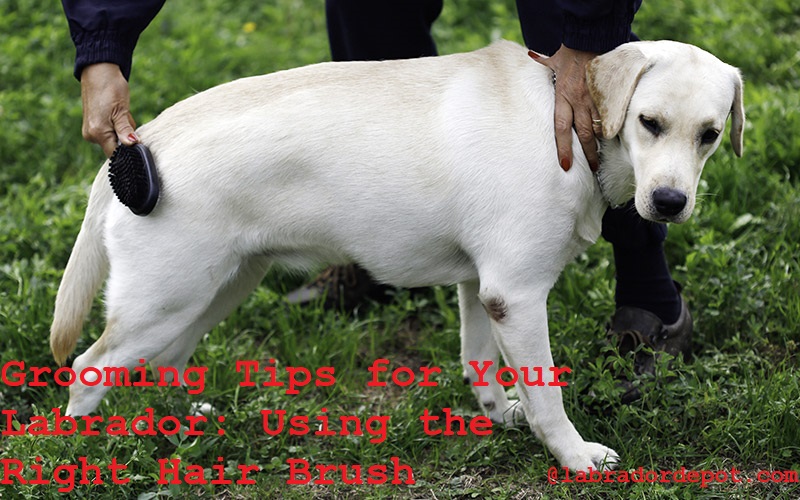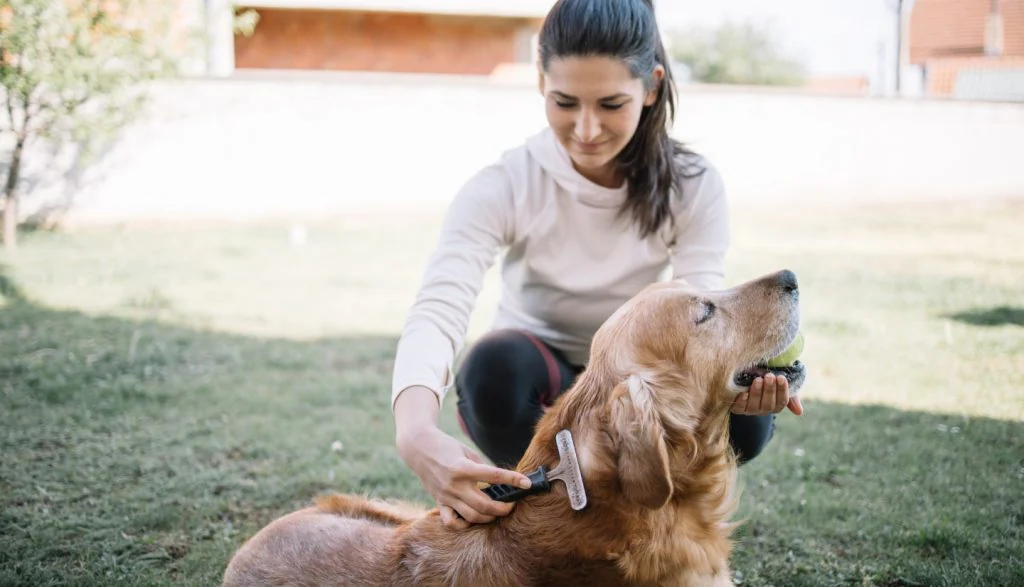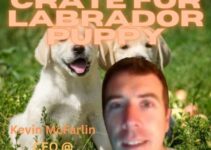Groom your Labrador’s fur the right way! Are you wondering what type of hair brush would be best for your furry friend? With this comprehensive guide, you can find out how to choose the perfect brush for your pup and ensure its healthy coat and skin.
You’ll also gain insight into all kinds of grooming tips that will keep your Labrador looking and feeling their best.
Welcome to our complete guide on hair grooming tips for your Labrador. Taking the time to brush your Lab’s coat is very important for their health, and choosing the right brush for their coat type is key. The right tools will make all the difference when it comes to caring for your pup.
This guide will provide you with the information you need to know about brushing, including why it is so important, what types of brushes are best and other tips to help keep your Lab looking and feeling their best. Keep reading on to learn more.
Choosing the Right Hair Brush
Once you’ve done your research and are ready to buy a brush for your Labrador, there are a few factors to consider when making your purchase. First, determine what type of coat your dog has – straight, wavy or curly – as this will dictate the type of brush you should get. Different hair types require different brushes.
Next, consider what type of brushing tool to use – a slicker brush, a detangling comb or a pin brush. Each tool serves its own purpose and ensures that you can achieve the desired results while brushing your pup’s fur. Slicker brushes feature short pins designed to penetrate deeply into the coat and remove dirt, debris, mats and tangles. Detangling combs are beneficial for removing knots without causing undue damage to the hair strands. Pin brushes feature long pins that can smoothly massage the scalp while providing an even removal of dirt during brushing sessions.
Finally, make sure you choose an appropriate size for your Labrador’s breed and weight when purchasing grooming tools. Brushes that have pins too close together can break delicate hair strands as well as cause discomfort during brushing time; also look out for sharp edges that can potentially hurt tender areas such as skin folds or sensitive ears. Select a brush with soft pads made from natural materials like coconut fibers or rubber that won’t scratch or irritate the fur while providing extra comfort during grooming sessions––your four-legged companion is sure to thank you!
Different types of hair brushes available
Brushing your Labrador’s coat is an important part of grooming and providing optimal health for your pet. There is a variety of types of brushes available to fulfill specific needs; knowing which brush to use when will make the process easier and more successful.
Slicker Brushes are best used on short-haired dogs. Very fine metal bristles are positioned closely on this brush, allowing it to penetrate deeply into the coat. Slickers are especially useful after baths to detangle mats and dead hair.
Rakes have wider teeth than slickers, reducing their ability to penetrate through deeper layers of fur but making them better suited for rough de-matting and undercoat removal. De-shedding Rakes typically have wider teeth, intended for thicker coats like a Labrador’s, making them effective at removing dead undercoat from the dog’s fur before it mats or casts off irritable pet dander in your home.
Bristle Brushes with tightly set natural bristles are best for weekly brushing on longer coats. Bristles massage deep into the coat, gathering up dirt and dirt particles without harming or pulling at the less dense topcoat fur. Glove Brushes with tightly spread rubber “plates” offer a similar massage effect as bristle brushes but combine superior scrubbing that can be very effective in removing dirt from longer hair between weekly grooming sessions as well as after baths.
Pin Brushes have narrow, flexible metal pins set closely together in all directions on this brush, enabling you to groom multiple layers of hairs easily while staying gentle enough so that you do not yank or pull at any fur follicles in the process!
Factors to consider when choosing a hair brush for your Labrador
When selecting the right hair brush for your Labrador, there are a few things you need to consider. For example, the type of coat your dog has will play a significant role when making a decision on what brush you should use.
Labradors can have either an undercoat or outer coat, meaning they will shed during different times of the year. The brush you choose should be able to handle both types of coats and remove dead fur so your pet is comfortable and healthy.
You should also think about the size of the brush you will need for your Labrador’s size and specific needs. Brushes that are too small or rough may irritate your dog’s skin and cause discomfort or even lead to skin irritation. On the other hand, those that are too large may cause your Labradors fur to become matted and tangled which can lead to skin issues. The best solution is to select a brush based on its size and shape while considering their individual needs as well.
The bristle type should also be evaluated when choosing a brush for your Labrador. Generally, bristle brushes with softer bristles work best for breeds with medium-length fur such as Labs, while harder bristles can make sure severe matting does not occur in long-haired breeds like Beagles or Shih Tzus. Common examples of good brushes for Labradors include rubber curry brushes and slicker brushes that come with either stainless steel pins or rubber tips to ensure optimum pet care with comfort in mind.
III. Step-by-Step Guide to Brushing Your Labrador’s Coat
Once you’ve chosen the right brush for your Labrador, it’s time to get down to work. Start at the head and work your way down the body in sections, beginning with the neck and proceeding down each side of their torso. Make sure you cover every part of their body including tail, ears, legs and feet. To ensure a deep cleanse and thorough brushing session use a circular motion as you detangle individual hairs with your comb.
Take care to be gentle as Labradors have sensitive skin which may cause discomfort if brushed too hard in certain areas. Your dog should enjoy this process – especially if it is accompanied by treats! For an extra pampering session, end with a rubdown of their fur using a dry cloth to bring out that final shine!
Preparing your Labrador for brushing
Good grooming is important in order to maintain the beauty and health of your Labrador. Before you start brushing it’s a good idea to prepare your pet correctly, so that the experience is comfortable and chances for success are maximized.
In addition to having the right brush for your pooch, you should also consider the following:
- Brush at the same time and place each day: Grooming can come to be associated with something fun if done at a consistent time and place each day.
- Check temperature: Make sure the room isn’t too hot or cold before beginning–you don’t want your pup becoming uncomfortable during brushing.
- Establish appropriate contact: The way you physically interact with your Labrador significantly impacts their responses. If there are any negative experiences, such as scolding or punishment, then it will become increasingly difficult to groom them in a manner that they enjoy.
- Gently stroke their fur first: Start by petting their fur gently before introducing the brush–this way they can become more familiar with the process gradually.
- Keep your hands warm and comfortable: Make sure that when you’re grooming them that your hands are not too cold or rigid so they don’t feel uncomfortable while being brushed.
- Provide treats/encouragement: Have some treats on hand while brushing so that you can reward them for good behavior towards grooming sessions.
Brushing techniques for different coat types
Depending on the type of Lab you have, you’ll need to adjust your brushing technique accordingly. Labs that have a double coat should be brushed with long strokes and gentle pressure. Use softer, gentle bristles or they may pull or tug at the coat, rather than glide through it as they should. You can start brushing against the grain of the fur, but then finish by brushing in the same direction as their coat lies. This will help distribute natural oils evenly throughout their coat which helps promote shine and brings out any existing highlights.
Labrador’s with single coats only require smooth strokes, but shorter tooth brushes or combs can help to de-tangle any knots or other problem areas without being too harsh on the hair.
For Labs that are more prone to tangles and mats, it’s really important not to rush through the grooming session — take it slow and stay patient! Use a slicker brush or deshedding tool designed for double coated breeds (as opposed to a comb) starting from the neck and working your way down their back legs until you get all of their fur is detangled and nicely smoothed down again. It can be helpful to divide sections into smaller parts so that you focus on each bit at a time for more thorough brushing results — this will also help prevent pulling sections too hard which can create discomfort for your Lab during grooming sessions!
Tips for making the brushing experience pleasant for your Labrador
Making the brushing process comfortable for your Labrador is key for successful grooming. Before beginning the session, be sure that your Labrador is in a relaxed environment. Put them in an area where they feel safe and secure, and provide positive reinforcement such as treats or verbal reassurance during the session. It is also important to accustom your Labrador to the process of brushing by frequently handling their fur and tail, so they are comfortable with being touched.
Be sure to select a proper brush for your Labrador’s coat type – dogs with short coats require firmer bristles, while dogs with longer coats require softer bristles to avoid damage. Prior to beginning brushing each session, make sure you check your dog’s coat for any matts or lumps which should be brushed out before you begin rubbing the brush over the rest of their body.
Finally, avoid becoming too aggressive when brushing – you should never pull too hard on any individual hairs as this could hurt or even damage their undercoat. Experiment with different brushing techniques until you find what works best for both you and your pet!
Other Grooming Tips for Labradors
In addition to brushing and bathing, there are some other grooming tips for Labradors you should be aware of. Regular nail care is essential for the health of your pet. Nails that are too long can cause pain or discomfort when walking or running, so it is important to trim your Labrador’s nails regularly with a pair of appropriate pet clippers or trimmers. If you don’t feel comfortable doing this yourself, take your Labrador to a professional groomer for regular nail care.
For a double coat breed like the Labrador, it’s also important to check for matting and tangles in the fur by brushing your dog several times per week. During shedding season, extra brushing and bathing are recommended; using an appropriate de-shedding tool may help remove excess fur from your Labrador’s coat.
Finally, pay special attention to cleaning different areas around the ears, eyes, and mouth as dirt can build up in all these locations quickly if not cared for properly.
Bathing frequency and tips
Bathing frequency can vary with the individual needs of your Labrador. Some Labs are good at staying clean and may only require a bath every few months, while other more active Labs may need to be bathed more often. Frequency is also determined by the type of activities your Lab participates in; water activities, muddy hikes or other outdoor excursions may necessitate more baths than normal.
In general, a gentle shampoo formulated specifically for dogs is recommended — never use human shampoo on your Lab! Different skin issues and sensitivities sometimes require special shampoos or even medicated shampoos prescribed by your veterinarian. Shampoos with oatmeal or aloe may provide relief from dry skin or irritating dander. It is important to rinse the coat thoroughly after shampooing; any soap residue can irritate the skin and cause further problems.
Once the bath is finished, towel-drying your dog is necessary to get them completely dry before using a dog brush. Make sure that all mats are worked out prior to brushing; tangled hair will only become more difficult as it dries if it isn’t brushed out properly while wet. If mats become severe, seeking professional grooming services may be necessary.
Nail trimming
Nail trimming is one of the most important grooming tasks for your Labrador and should be done regularly. Because Labradors have strong nails, it’s best to have them trimmed professionally. However, if you’re confident about doing it yourself, make sure you use the right tools and follow these steps.
First, you’ll need to purchase special clippers designed specifically for dogs. These are usually made from stainless steel and come in sizes to suit different breeds. Avoid using human nail clippers as they are too large and could cause damage. When clipping, focus on cutting off only the tips of the nails; do not cut into the fleshy part at the base of the nail as it can be painful for your Labrador (and may cause them to try to avoid having their nails trimmed in future). A good rule of thumb is that when you can hear a clicking sound when you press down on your dog’s paw pads, it’s time for a trimming!
The process may take some time and patience so that your dog becomes used to having their nails trimmed. Take breaks throughout the session and offer rewards after each successful clip. After all of their nails are clipped, double check your work – make sure none of them have been missed and check for splinters or cracks in each one before finishing up.
Ear cleaning
It’s important to keep your pet’s ears clean to avoid ear infections and damage to the ear drums. For a Labrador Retriever, you should use a soft cotton swab for thorough cleaning. You can find specially made wax removal tools or even a cotton swab with a wooden handle is perfect for the job.
When cleaning, never insert the swab into the ear canal as this could cause damage. Instead, gently rub the inner part of the ear with gentle outward strokes along the edges of your fingers with either moist cotton or some kind of cleaner specifically designed for cleaning labrador’s ears.
Be sure to clean both sides of each ear and make sure that when checking them afterwards they have no redness or abnormal odor coming off them. Finally, be sure to dry off any excess moisture so your labrador won’t end up with an itchy ear infection!
Teeth brushing
It is important to maintain good dental hygiene not only for you but also for your pet Labrador. Brushing their teeth on a regular basis helps keep their breath fresh and prevent infections, tooth decay, and gum disease. The general recommendation is to brush your dog’s teeth at least two or three times a week, but it is especially important to do so after meals or snacks.
The tools you choose for brushing your pet’s teeth are just as important as the frequency of brushing. For best results, use a toothbrush designed specifically for dogs; these usually feature soft bristles that won’t damage your pet’s enamel. If you can’t find one, an infant’s toothbrush or finger brush will work in a pinch — just be sure the bristles are soft! Your local pet store should have toothpastes formulated specifically for dogs that come in different flavors like beef and chicken; this will help entice them to let you brush their teeth in the future!
If you’re unsure how to properly introduce them to this process, watch some instructional videos online or consult a veterinarian with experience in handling dog grooming issues. Taking small steps initially — such as getting them used to having their mouth touched — can go a long way towards successful at-home oral hygiene maintenance for your Lab. With patience and practice, brushing their teeth can become part of your daily routine!
Conclusion
In conclusion, when it comes to brushing your Labrador’s coat, you have many choices. There are several types of brushes that can be used from a simulated sheepskin brush to a steel pin brush. Depending on the thickness and length of your pup’s coat and their individual preferences, the type of brush that will work best may vary even within the Labrador Retriever breed. It is best to practice with different brushes to find what works most effectively and provide the most comfort for your pup.
Additionally, you should always take into account any sensitivities or allergies they may have. As with anything involving our beloved canine companions, remember to remain patient while grooming their coats— and don’t forget lots of treats!
FAQ’s
What type of brush is best for a Labrador?
A slicker brush or a combination bristle/undercoat rake is best for a Labrador’s thick, double coat.
What is the proper dog brushing technique?
The proper dog brushing technique involves brushing in the direction of hair growth, starting at the head and working towards the tail, and being gentle to avoid causing discomfort or skin irritation.
Is it OK to brush a Labrador?
Yes, regular brushing is important for maintaining a Labrador’s coat health and reducing shedding.
Is it better to brush a dog wet or dry?
It is better to brush a dog’s coat when it is dry, as wet hair can become matted and difficult to brush.
Do dogs feel better after a brush?
Many dogs enjoy being brushed, as it can be a relaxing and bonding experience. Additionally, regular brushing can help remove tangles and mats, which can be uncomfortable for dogs.
Is it OK to brush your dog every day?
Yes, brushing your dog every day can help maintain their coat health and reduce shedding. However, it is important to be gentle and not brush too aggressively.
How often should you brush a Labrador retriever?
A Labrador retriever should be brushed at least once a week to maintain their coat health and reduce shedding.
Should I brush my dog morning or night?
There is no specific time of day that is best for brushing your dog. It is important to choose a time when your dog is relaxed and comfortable.
Which dog brush to use first?
It is best to start with a slicker brush to remove any tangles or mats, and then use a bristle brush or undercoat rake to remove loose hair and debris.
Do dogs need toothpaste when brushing?
Yes, dogs should use toothpaste specifically formulated for them when brushing their teeth, as human toothpaste can be harmful to dogs.
See Aslo-
- Best brush for Labrador
- Best collar for pulling Labrador
- Best crate for labrador puppy
- Best dog bed for Labrador
- Best dog food for labrador retriever


